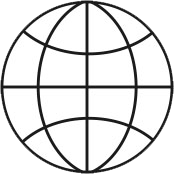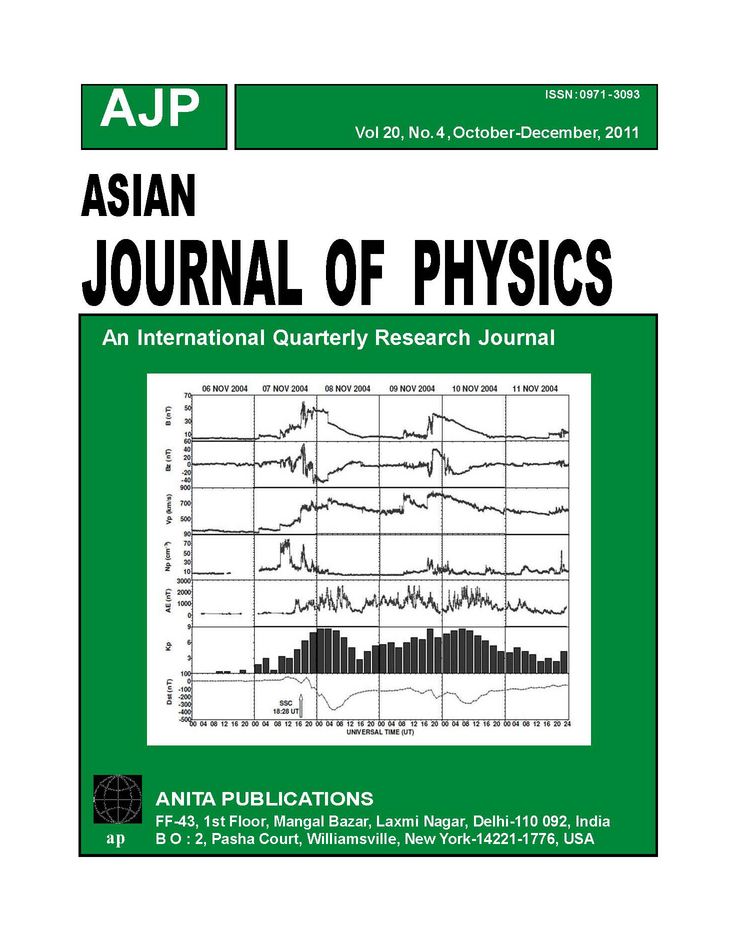
ap

ap
An International Peer Reviewed Research Journal

AJP
ISSN : 0971 - 3093
Vol 20, No. 4 , October-December, 2011
Asian Journal of
Physics
Vol. 20, No. 4 (2011) 299-318
Effects of geomagnetic super storms on the ionospheric F-region in
the
south American sector using a GPS technique: A Review
Y
Sahai1 , A J De Abreu1 , P R
Fagundes1 , R DE Jesus1, G Crowley
Rowley2, M V Klimenko3 , V V
Klimenko3 , C Brunini4 , M
Gende4,
V G Pillat1 , J R Abalde1 , and J A Bittencourt5
1Universidade do Vale do Paraiba (UNIVAP), São José dos Campos, SP, Brazil
2Atmospheric & Space Technology Research Associates (ASTRA) LLC, San Antonio, TX, USA
3West department of N. V. Pushkov IZMIRAN RAS, Kaliningrad, Russia
4Facultad de Ciencias Astronómicas y Geofísicas, Universidad Nacional de La Plata, 1900, La Plata, Argentina.
5Instituto Nacional de Pesquisas Espaciais (INPE), São José dos Campos, SP, Brazil.
____________________________________________________________________________________________________________________________________
In the present investigation, the effect of several super storms on the ionospheric region covering the South American sector (Brazil and Argentina) has been studied using a GPS technique. The super storm periods studied include geomagnetically quiet, disturbed and arecovery phases. Considering super storms with |Dst| > 250 nT, four periods with six super storm events have been analyzed. The four periods analyzed are 05-08 April 2000 (only Brazilian sector), 27-31 October 2003 (Brazilian and Argentinean sectors), 19-23 November 2003 (only Brazilian sector), and 06-11 November 2004 (Brazilian and Argentinean sectors). In this review, we present and discuss in a consolidated form during the results obtained by us during these superstorms. Both vertical total electron content (VTEC) and phase fluctuations (TECU/min) from several GPS stations (for which data were available) have been presented. Phase fluctuations are a good indicator of spread-F irregularities with a few km sizes. We have compared the observed TEC at different GPS observing sites during the four periods with the TIME-GCM simulation results. The model results show both similarities and differences from the observed results. Large variations (both positive and negative storm phases) in the VTEC during the main and recovery phases compared to quiet day variation were observed in several super storm events studied. The phase fluctuations indicate the presence of plasma bubbles extending to the Argentinean sector during the post-sunset pre-reversal period of super storms on the nights of 29-30 and 30-31 October 2003, and 07-08 November 2004.
____________________________________________________________________________________________________________________________________
Asian Journal of
Physics
Vol 20, No 4(2011)321-402
2.Advances in Photonic and Microwave Technologies Based on Negative
Phase velocity Materials
and Related Areas: A Qualitative Bibliographic Review for the year 2007
Sanjay Kumar*, K. N. Chopra, Joby Joseph, and Kehar Singh
Photonics
Group, Department of Physics, I. I. T. Delhi, New Delhi-110 016,
INDIA
____________________________________________________________________________________________________________________________________
With the successful demonstration of the use of negative phase velocity materials (NPVMs) for making super lenses with resolution capabilities not limited by the conventional diffraction limit, a considerable amount of interest has been shown in using subwavelength structures to develop materials having qualitatively new response functions not occurring in nature. These materials result in modified Snell’s law of refraction, a reversed Doppler shift and an obtuse angle for Cerenkov radiation [see e.g. Veselago, V.G., Sov. Phys. Usp. 10 (1968) 509-514]. The perfect lens enables imaging with subwavelength resolution, and has attracted the attention of many researchers in studying its focusing and imaging characteristics. With the universal acceptance of the phenomenon of negative refraction (NR) and the suitability of some photonic crystals (PhCs) as left-handed materials (LHMs), considerable interest has also been shown in studying the PhCs in the context of NR. In less than a decade, many interesting investigations on the basis of materials with NR, e.g. superlens designing, focusing, resolution, defect modes, resonance modes, anomalous effects, and nonlinear effects etc. have been reported. These materials are becoming increasingly important for fabricating some devices in the fields of Photonics and Microwave Technologies. This review is an attempt to present a glimpse of publications in the year 2007, of the rapidly growing field which has now become so vast that it is nearly impossible to cover everything. No claim is made as to the completeness of the reporting of various investigations on the subject. Such surveys for the years 2005, 2006, and 2008 have already been published (1-4).
1. K.N.Chopra, Joby Joseph and Kehar Singh, Invertis J. Sci. Technol. 3 (2010)
2. K.N. Chopra, Sanjay Kumar, Joby Joseph and Kehar Singh, Invertis J. Sci. Technol. 4 (2011) 84-126.
3. K.N. Chopra, Sanjay Kumar, Joby Joseph and Kehar Singh, Invertis
J. Sci. Technol. 4 (2011) 146-187.
4. K.N. Chopra, Joby Joseph and Kehar Singh, Asian J. Phys. 18 (2009) 17-56.
Keywords: Negative Refractive Index Materials, Metamaterials, Nano-optics, Negative Refraction, Cloaking, Negative Phase Velocity Materials, Left-handed Materials, Photonic Crystals, Chiral Media, Superresolution, Subwavelength Focusing, Superlenses, Antennas, Plasmonics.
____________________________________________________________________________________________________________________________________
Asian Journal of
Physics
Vol. 20, No. 4 (2011)
403-423
3. Density functional theory computations on vibrational spectra:
Scaling procedures to improve the results
M Alcolea Palafoxa and V K Rastogib
aDepartamento de Química-Física I. Facultad de
Ciencias Químicas Universidad
Complutense, Madrid- 28040-ES. SPAIN
bDepartment of Physics, CCS University Campus, Meerut-250004, India.
____________________________________________________________________________________________________________________________________
The basic Density Functional Theory (DFT) was described, and the most common density functionals were listed. The performance of ab initio and DFT methods in calculating the geometric parameters and vibrational frequencies was analyzed. The accuracy of the results in the isolated state, as well as in the solid state was shown in the IR and Raman spectra. To correct the calculated frequencies, several scaling procedures were described in detail. A comprehensive compendium of the mainly scale factors available to date for a good accurate prediction of the frequencies was also shown. Examples of each case were presented, with special attention to the benzene and uracil molecules and to some of their derivatives.
____________________________________________________________________________________________________________________________________
© ANITA PUBLICATIONS
All rights reserved
Designed & Maintained by
Manoj
Kumar